Hints: Home User Formats
Scroll down for more
We have two different classifications of video formats and the “Home User Formats” is the most common. These formats are VHS, VHS-C, SVHS, SVHS-C, Video8, Hi8, Digital8 and MiniDV.
Just in case you aren’t sure what you’ve got, here are some of the formats we cover at The Video Copy Company, and a bit of info about each…just click on the pictures below.
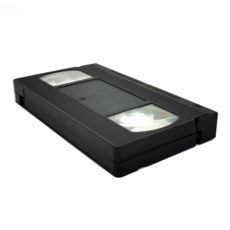
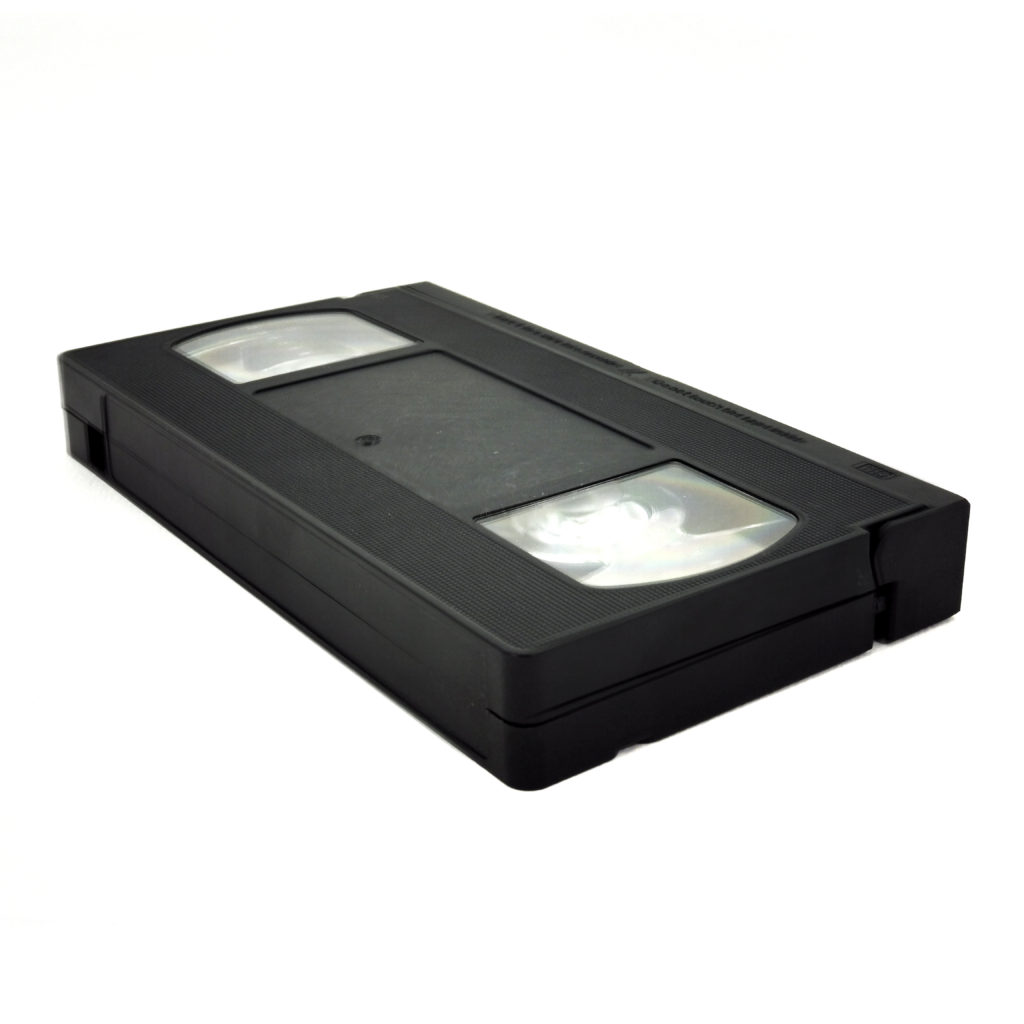
VHS
The Video Home System (VHS) is a standard for consumer-level analogue video recording on tape cassettes. Developed by Victor Company of Japan (JVC) in the early 1970s, it was released in Japan in late 1976 and in the UK and USA in early 1977.
This type of video tape became available in the following recording lengths in the UK and worldwide:
E 240 4 hours
E180 3 hours
E120 2 hours
E90 1 hour 30 minutes
E60 1 Hour
E30 30 minutes
E15 15 minutes
All of these recording lengths of tape were able to record double the minutes shown if your VHS player had the ability to record in LP (Long Play) Mode. If your tape is an E 180 (3 Hours) but was recorded using LP Mode, then a full tape would run for 6 hours. If we receive a tape that is over 3 hours running time we may split the transfer on to a two DVD set to provide the best quality transfer and this would be charged for accordingly.
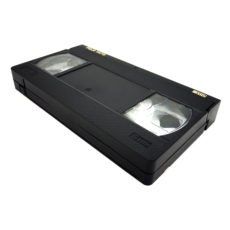
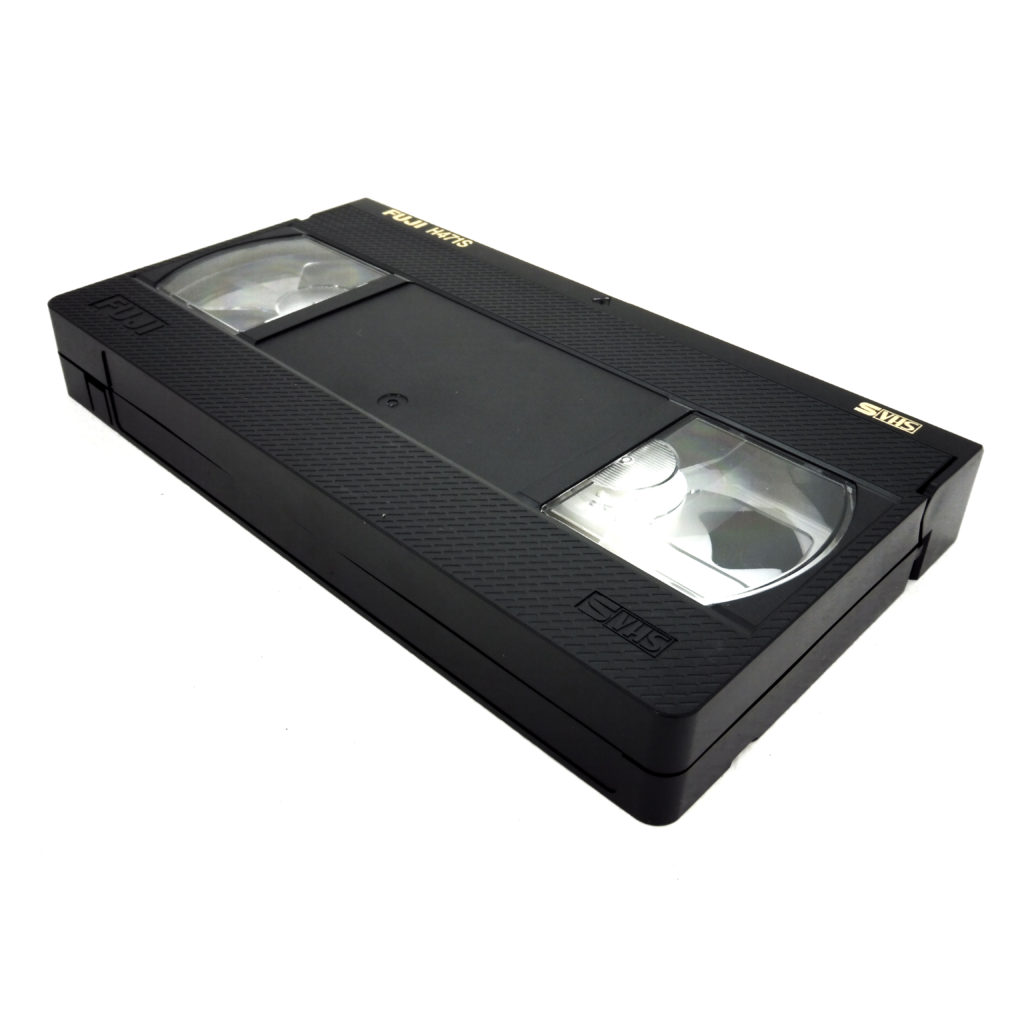
SVHS
S-VHS (Super VHS) arrived in around 1987 and was the next stage in the development and improvement of the VHS Format. S-VHS recordings were nearly twice as sharp and more detailed than Standard VHS. This format did quite well, and many people took up the new S-VHS system. The largest market for this new format was with video filming semi-professional and professional video filming companies. However, this format was never regarded as a broadcast format to make TV programmes, but it was still a very good and cost-effective way to produce higher quality images and was available to the general public.
S-VHS Tapes were available in the following recording lengths:
E 240 4 hours
E180 3 hours
E120 2 hours
E90 1 hour 30 minutes
E60 1 Hour
E30 30 minutes
All of these recording lengths of tape were able to record double the minutes shown if your SVHS player had the ability to record in LP (Long Play) Mode. If your tape is an E 180 (3 Hours) but was recorded using LP Mode, then a full tape would run for 6 hours. If we receive a tape that is over 3 hours running time we may split the transfer on to a two DVD set to provide the best quality transfer and this would be charged for accordingly.

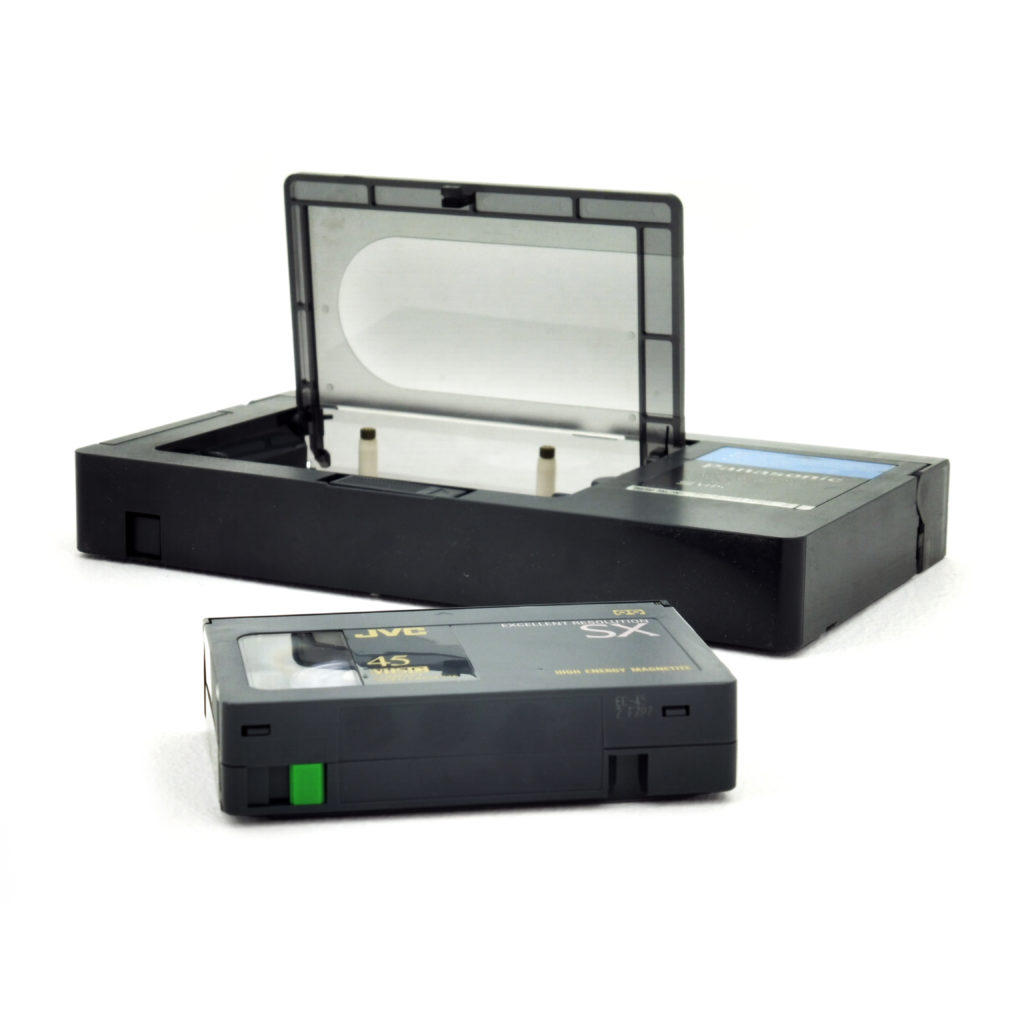
VHSc
VHS-C is the Compact VHS format, introduced by Victor Company of Japan JVC in 1982 and became immediately popular because of the small size of the camera and the vast reduction in weight compared to a full-size VHS camcorder. The format is based on the same video tape used in VHS and can be played back in a standard VHS player using an adapter. The format was available in both 30-minute and 45-minute recording lengths.
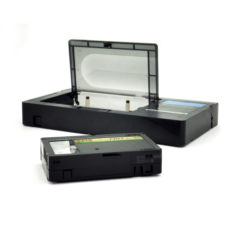
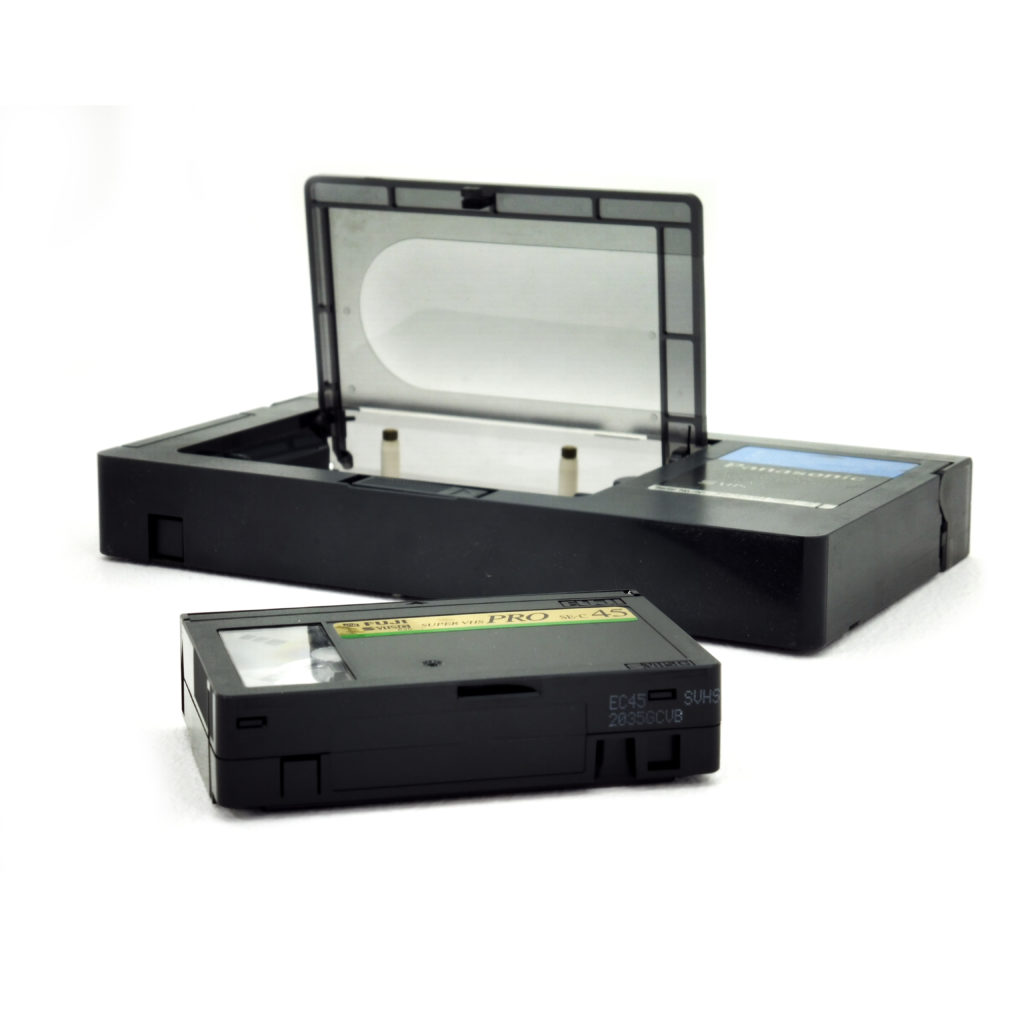
SVHSc
This format was introduced shortly after VHS-C and provided the same size of cassette tape as VHS-C, but the SVHS-C format provided pictures of nearly twice the detail and sharpness of the earlier VHS-C format. This format was taken up by keen amateur videographers and some semi-professional video makers. This did not last very long as we soon had the arrival of MiniDV digital video that used smaller sized tapes and produced results that were described as near-broadcast quality.
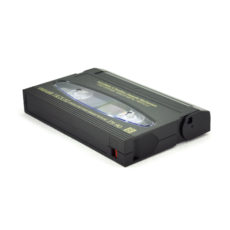
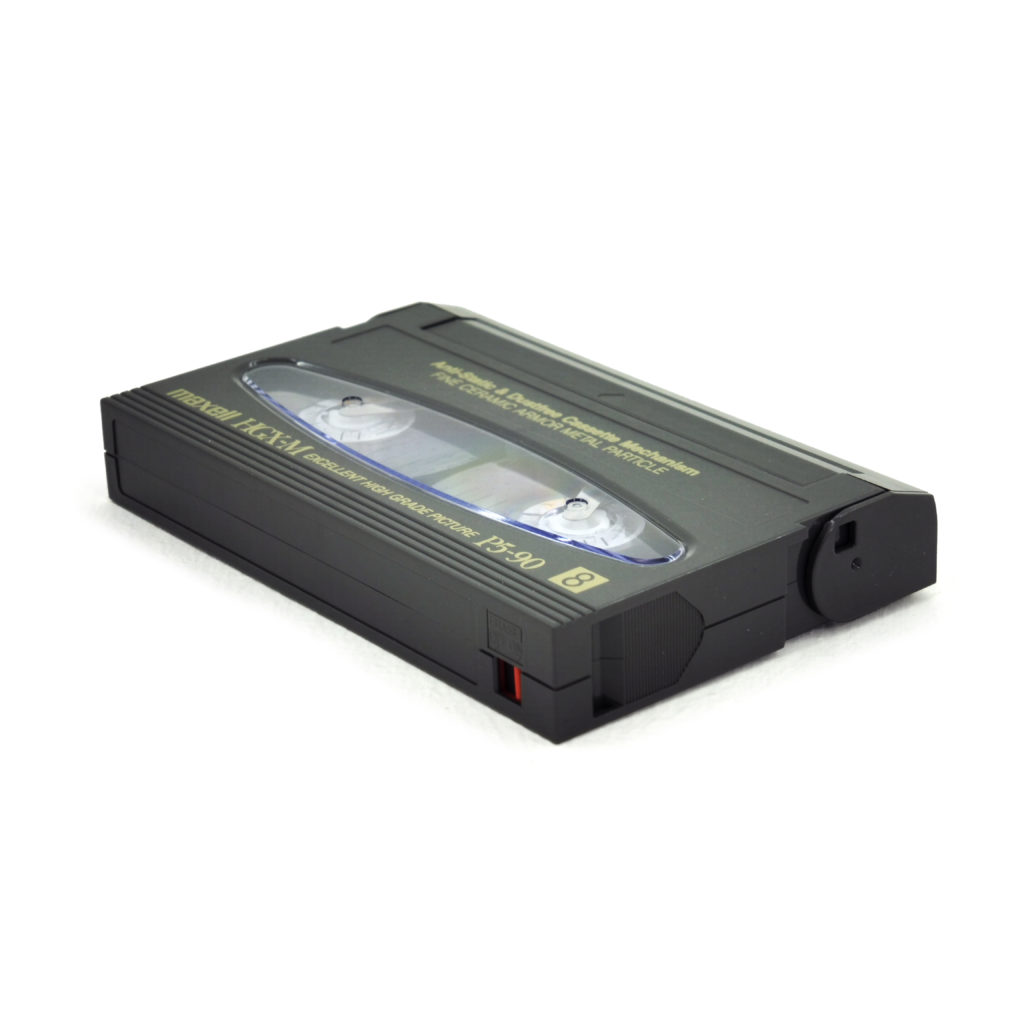
Video8
Video8 was launched in 1985, into a market dominated by the VHS-C, VHS and Betamax formats. The first camera model was the Sony Handycam CCD-V8; a record-only model with no playback features, with only three focus settings and a 6x zoom. Soon after, an Auto-focus model was introduced.
In terms of video quality, Video8, VHS, and Betamax offered a similar performance in their standard-play modes but, in terms of audio, Video8 generally outperformed its rivals. This format was to be a big success in the home video market as it was smaller and lighter than anything else available at the time. Eventually Video8 led to the development of even higher performance formats such as Hi8 and Digital8.
The recording durations for Video8 are as follows:
30 minutes
60 minutes (1 hour)
90 minutes (1 hour 30 minutes)
120 minutes (2 hours)
The recording time of all the above would double if filmed using the LP (Long Play) function.
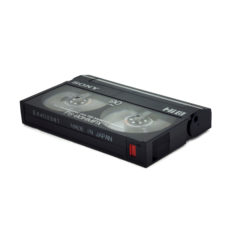
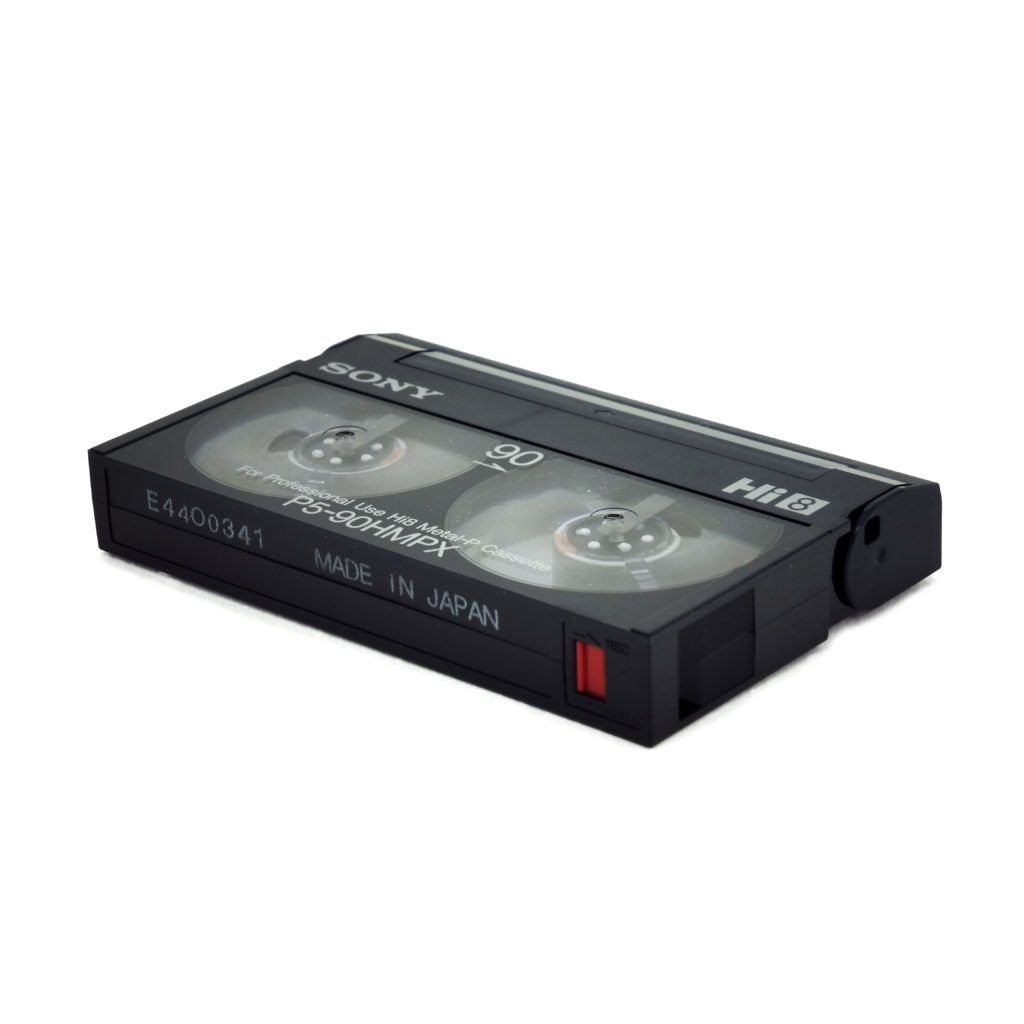
Hi8
Hi8 was developed in a similar way to VHS and S-VHS. Hi8 was exactly the same size of tape as Video8, but the recording system had been improved to produce pictures and quality of detail that was almost twice as good as the earlier Video8 system.
The recording durations for Hi8 are as follows:
30 minutes
60 minutes (1 hour)
90 minutes (1 hour 30 minutes)
120 minutes (2 hours)
The recording time of all the above would double if filmed using the LP (Long Play) function.
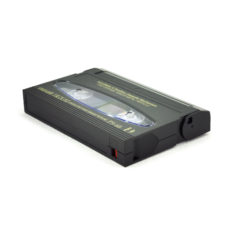
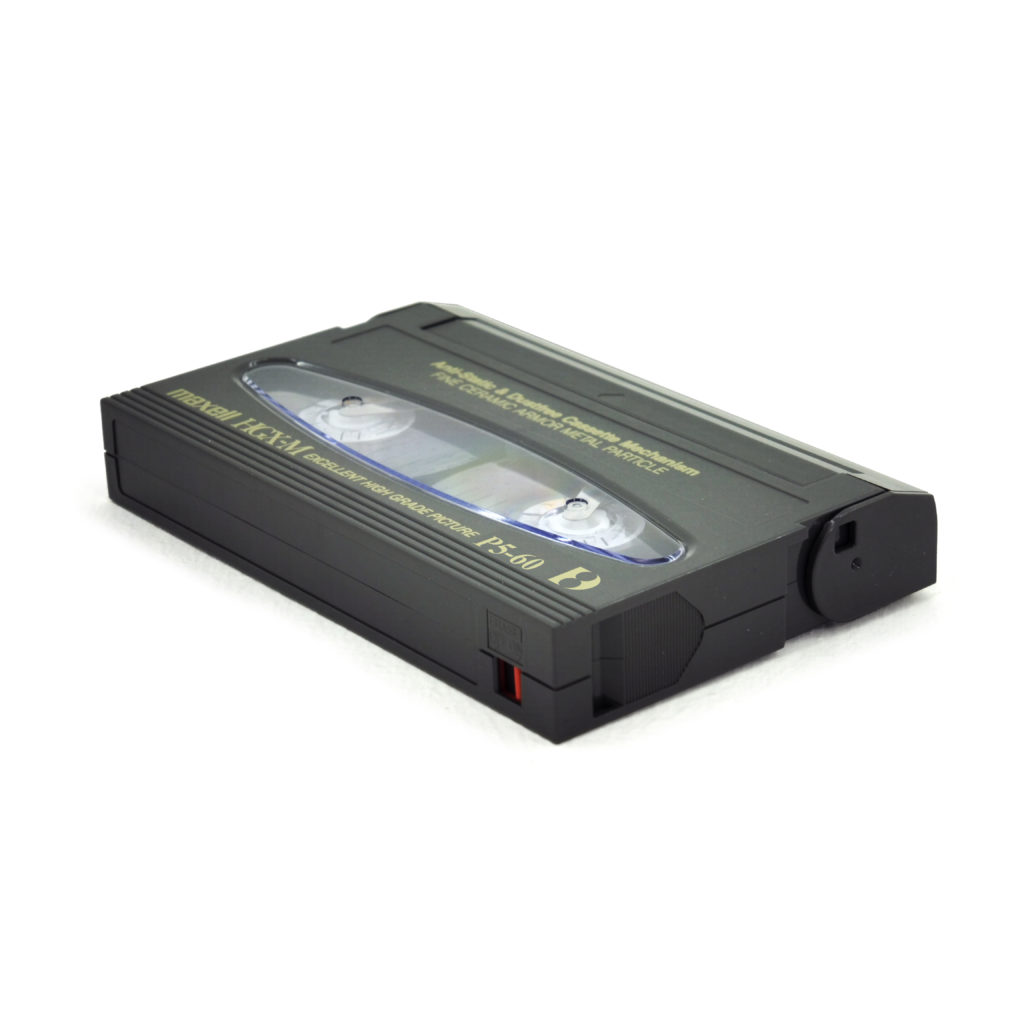
Digital8
Digital8 is an obsolete consumer digital recording cassette for camcorders and based on the earlier Video8 and Hi8 systems. It was developed by Sony and introduced in 1999.
This format was yet another improvement to the previous Vido8 and Hi8 formats.
Digital8 was the new way of recording high quality images at very high resolution (500 lines as opposed to Video8’s 240 lines and Hi8’s 400 lines.
Digital8 tapes could only be played back on a Digital8 camera or a Digital 8 video player, but most of these players would also play Video8 and Hi8 tapes as well, and you could even use these older format tapes to record Digital8 footage in these new cameras, though the recording time would be much less than was written on the case.
This format was very popular with both keen amateurs and the semi-professional market and has been known to be used for news gathering for TV due to the small camera and tape size.
The recording durations for Digital8 are as follows:
60 minutes (1 hour) in SP mode or 90 minutes (1 hour 30 minutes) in LP mode
90 minutes (1 hour 30 minutes) in SP mode or 135 minutes (2 hours 15 minutes) in LP mode
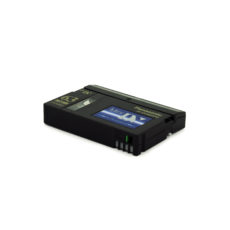
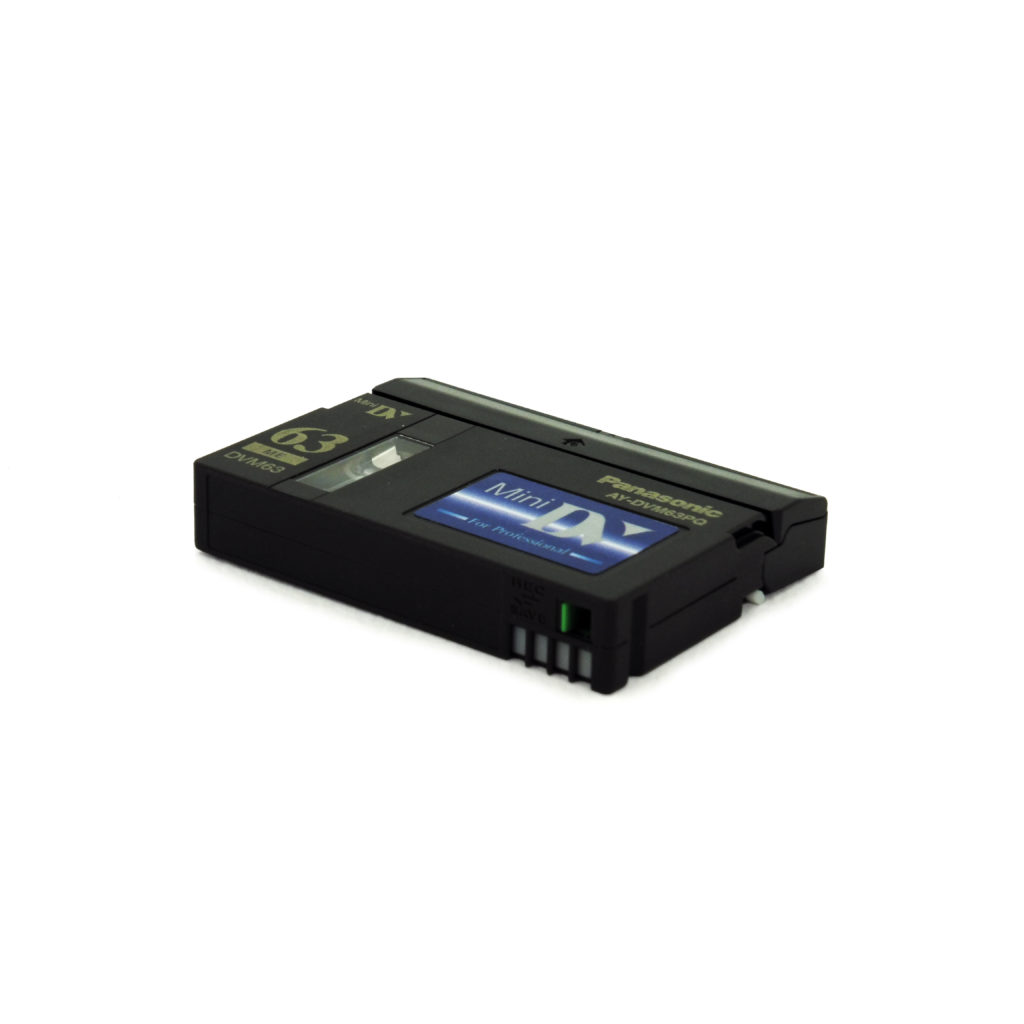
MiniDV
DV is a format for storing Digital Video and was launched in 1995 with the joint efforts of the leading producers of video cameras and recorders. MiniDV reduced the cassette size even further, thus making the cameras even smaller.
MiniDV became very popular and was initially released as a home-user format, though the high-quality results made it ideal for use in broadcast.
Tape recording would soon be replaced by such formats as Mini DVD camcorders, cameras with hard drives built-in, and eventually the tiny memory cards that are used now in all sorts of cameras, phones and tablets nowadays.
The recording length for MiniDV was 60 minutes (1 hour) in standard play mode, but you could get up to 90 minutes (1 hour 30 minutes) if you recorded in long play.
Each format pretty much represents an era of home video and a significant change in the technology and quality available at the time.
VHS (Video Home System) is the oldest format on this list, being released to the UK public in 1977, and by 1980 had beaten its closest rival, Betamax. It is also, without a doubt, the most popular format we convert here at The Video Copy Company.
Though bigger in size but poorer in quality, VHS boasted longer recording times than Betamax, which sparked the interest of the general public as they found it was more suited to recording longer sporting events, and with the advent of the long play facility in newer VCRs, those long recording lengths doubled, so an E180 video tape, which would normally hold 3 hours of footage could now hold a massive 6 hours!
VHS could also be used in camcorders, but these where huge, cumbersome devices. In the early days, the user would hold the camera in one arm and would also need to carry a heavy tape recorder in the other.
This prompted JVC, the inventor of VHS, to produce a smaller, more compact version of the VHS tape; VHS-C in 1982.
This tape was the same thickness as VHS, but was about a third the size in depth and width. Though it could only record for a fraction of the longest running VHS tapes, it was still a massive advancement as the camcorders could now be smaller, lighter, and above all else, cheaper!
Not only that, but as the thickness of the cassette was the same as VHS, VHS-C tapes could be placed into a special housing which allowed the tapes to go straight in to the VCR machines at home and immediately watched.
In 1985, Video8 was launched. As opposed to VHS-C, whose tape width was 12.7mm (half an inch) in a 25mm (1 inch) thick housing, Video8 used 8mm tape in a 15mm (half an inch) thick housing. The much smaller size was paired with longer recording times.
Video8 was in direct competition with VHS and VHS-C, and though the video quality of three formats were comparable, Video8 far outshone VHS in terms of audio quality.
The format was a huge success in the home video market, mainly due to the convenient size of the tapes and associated cameras, making it much easier to use on holiday.
Video8 is probably our second most popular format to transfer here at The Video Copy Company.
In around 1987, JVC made another advancement in home video by releasing SVHS (Super VHS). The dimensions of an SVHS tape were exactly the same as a VHS tape. The difference was the quality of the recording. SVHS could produce images that were nearly twice as sharp as and more detailed than standard VHS. The user would need a new SVHS VCR to record and play back tapes in this new quality, but the interest was there – especially from semi-professional and professional video companies.
SVHS was never considered a “broadcast quality” format (though some local TV stations in Canada did use it in the years before digital), but it was still a very good and cost-effective method of producing higher quality images that was available to the general public.
Again, JVC released a compact version called SVHS-C, which boasted the same small size as VHS-C, but with the extra sharpness and detail provided by the larger SVHS tape.
SVHS-C tapes could also be placed in the same VHS-C housing to allow for immediate playback in a home VCR machine.
SVHS-C didn’t really gain the public attention of VHS-C, mainly due to the introduction of Hi8 in 1989.
As the public was already used to the benefits of smaller tapes, and as such smaller camcorders, Hi8 was a natural progression for those who wanted SVHS quality camcorder recordings, with the enhanced audio quality that Hi8 offered.
Hi8 cassettes had exactly the same dimensions as Video8, and old Video8 recordings could be played back on Hi8 devices. In most cases, Hi8 camcorders could even record on old Video8 tapes as well!
Needless to say, Hi8 was a success in terms of the public, ranging from home user to semi-professional video enthusiasts.
However, in 1995, The DV format was introduced. DV stands for “Digital Video” and offers a massive improvement in both image and audio quality.
Several companies released their own professional versions of DV tape, which were large and of very high quality, but it was the introduction of MiniDV that really changed things. MiniDV was a tiny cassette – the likes of which the general public hadn’t seen before. MiniDV was largely responsible for ending the dominant run of Hi8 as it was seen as such a drastic improvement in both quality and size that, again, it made taking a camcorder on holiday so much easier.
Though MiniDV was initially introduced as a consumer avenue in to the DV market, due to the quality of recording, relative price and size, it was also adopted by semi-professionals, professional videographers, and even news gathering organisation as the format of choice.
In an attempt to compete with MiniDV, Sony introduced Digital8, which essentially took the technology of MiniDV and applied to the Hi8 format. Sony even licenced their Digital8 technology to other companies who produced camcorders for this format.
Looking at technical specifications, Digital8 and MiniDV were identical as far as recording quality was concerned; even the tape durations of 60 minutes were the same.
The benefit of Digital8 was that this new, higher quality recording could be attained using old Hi8 and in some cases Video8 tapes, though the 90 minute durations in Hi8 mode would be cut down to 60 minutes as the tape would run faster.
Some Digital8 camcorders even had the ability to play back Video8 and Hi8 footage, which was very useful for those wanting to transfer footage to a computer as the camcorder itself would convert the old analogue signal into a digital one, outputting it through a FireWire (IEEE1394) cable.
As well-loved as Digital8 was with enthusiasts and semi-professional videographers, it’s popularity eventually fizzled out to MiniDV.
That’s the brief history lesson over with!
Some of these formats – especially from the VHS family – can prove to be quite bulky, and if you have different formats cluttering up your shelves, getting these tapes transferred to some other media can free up lots of space. Not to mention the longer you leave these tapes lying around, the more chance there is of them succumbing to damage and the risk of losing these precious memories forever.
Here at The Video Copy Company, we provide various options when it comes to backing up your Home User Format tapes;
The most common conversion that we do here is a Video to DVD Transfer. This involves running the video tape through one of our industrial video players and into a machine which will convert the video from, in most cases, an analogue signal into a digital one, burning it onto a DVD-R disc.
We offer two different types of DVD-R disc; Standard DVD-R and Gold Archive DVD-R.
DVD-R was introduced in 1997 by Pioneer and is supported by most DVD players (there is another format called DVD+R which is supported by fewer DVD players. It is important you know which format your DVD player prefers as we cannot be held responsible for converting to the wrong format). We can convert to DVD+R but you must let us know you require this format before we do the conversion.
DVD-R was supposed to supposed to last forever, but it was later discovered that this was not the case. The data burnt to a Standard DVD-R can last between 2-10 years. Sometimes more, sometimes less. At The Video Copy Company, we only use A-grade discs, so our recordings should last 10 years or more.
Gold Archive DVD-R was then developed, which uses layers of real gold and silver to lock the burnt-in information to be hold in place for up to 100 years. You can find out more in-depth information about the differences between Standard and Gold Archive DVD-Rs here…
Though the picture quality, audio quality and storage size are all the same, and both discs can be physically damaged with scratches and finger prints, a well stored Gold Archive DVD-R should last for generations.
An increasingly more common conversion that we also do here is a Video to MP4 Transfer. This involves running the video tape through one of our industrial video players and into a computer, which will then convert the video file into a format that the general public can easily handle, such as MP4.
We can convert the video into other formats, such as MPEG2, AVI, Quicktime, to name but a few. It depends what you want to do with the video and how much storage space is available.
MP4 is the most common format used as it is compatible with most modern smart TVs, PCs, Macs, smartphones, tablets, video game consoles and so on.
Once your videos are converted, they can then be copied to a USB device like a pen or an external hard drive, depending on how much footage you have. We like to convert videos to a high quality MP4 file as this will be suitable for re-editing in the future and will look great on high quality TVs. When deciding how much storage space is required, one hour of footage takes up roughly 6GB of space.
It is also important that you let us know if you are using a PC or a Mac as the two systems may require the pen or hard drive to be formatted in a different way. You can find more information about external storage devices here.
